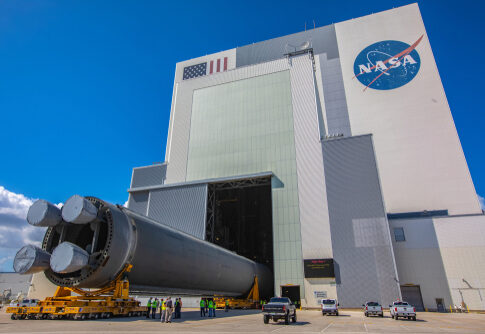A cosmic wanderer from the depths of interstellar space has been confirmed as the third visitor of its kind to enter our solar system, providing scientists with an unprecedented opportunity for observation. Named 3I/ATLAS, this celestial traveler is currently racing between Jupiter’s orbit and the asteroid belt at a mind-boggling speed of 130,000 miles per hour, heading toward the inner solar system. What makes 3I/ATLAS so different compared to its predecessors?
A Rare Cosmic Visitor
Astronomers have confirmed the discovery of an interstellar object racing through our solar system, only the third such visitor ever detected. The object, designated “3I/ATLAS” or “A11pl3Z,” was spotted by NASA’s Asteroid Terrestrial-impact Last Alert System (ATLAS) telescope in Chile on June 2, 2024.
This cosmic traveler is currently located approximately 420 million miles from Earth, positioned between Jupiter’s orbit and the asteroid belt. Scientists have confirmed it poses no threat to our planet, as it will maintain a distance of at least 150 million miles from Earth during its journey through our solar neighborhood.
Interstellar visitor confirmed. #A11pl3Z is now known as 3I/ATLAS. It is only the third confirmed object from beyond our solar system. pic.twitter.com/jLsRRXUZPG
— Tony Dunn (@tony873004) July 2, 2025
Characteristics and Trajectory
Initial observations suggest 3I/ATLAS displays cometary features, including a marginal coma and short tail, making it likely the second known “rogue” comet from interstellar space. The object is traveling at approximately 130,000 miles per hour, which Harvard’s Avi Loeb described as “thousand times over the speed limit on a highway,” a velocity that confirms its origin from outside our solar system.
Its size remains uncertain due to its cometary features obscuring precise measurements. If it were a rocky asteroid, scientists estimate it would be approximately 12 miles wide, but as a comet with an active coma, determining its exact dimensions becomes more challenging.
The third interstellar object visits the solar system.
The interstellar asteroid "Oumuamua"
The interstellar comet "Borisov"
The interstellar object "3I/ATLAS"#A11pl3Z#Oumuamua pic.twitter.com/2yBsZQFmQ5— N i n j a (@thesubzero11) July 3, 2025
Scientific Opportunity
The interstellar visitor is expected to make its closest approach to the sun around October 30, coming within approximately 130 million miles of our star. Astronomers worldwide are coordinating observations through multiple telescopes, including ATLAS and the Zwicky Transient Facility, to gather valuable data about this rare object before it passes too close to the sun to be visible in September.
Unlike previous interstellar visitors “Oumuamua” and “21/Borisov,” 3I/ATLAS offers an extended observation period that will continue when it reappears in early December after passing the sun. This prolonged visibility provides scientists with an unprecedented opportunity to study material from beyond our solar system, potentially revealing new insights about the composition of objects from interstellar space and the broader galactic environment.

